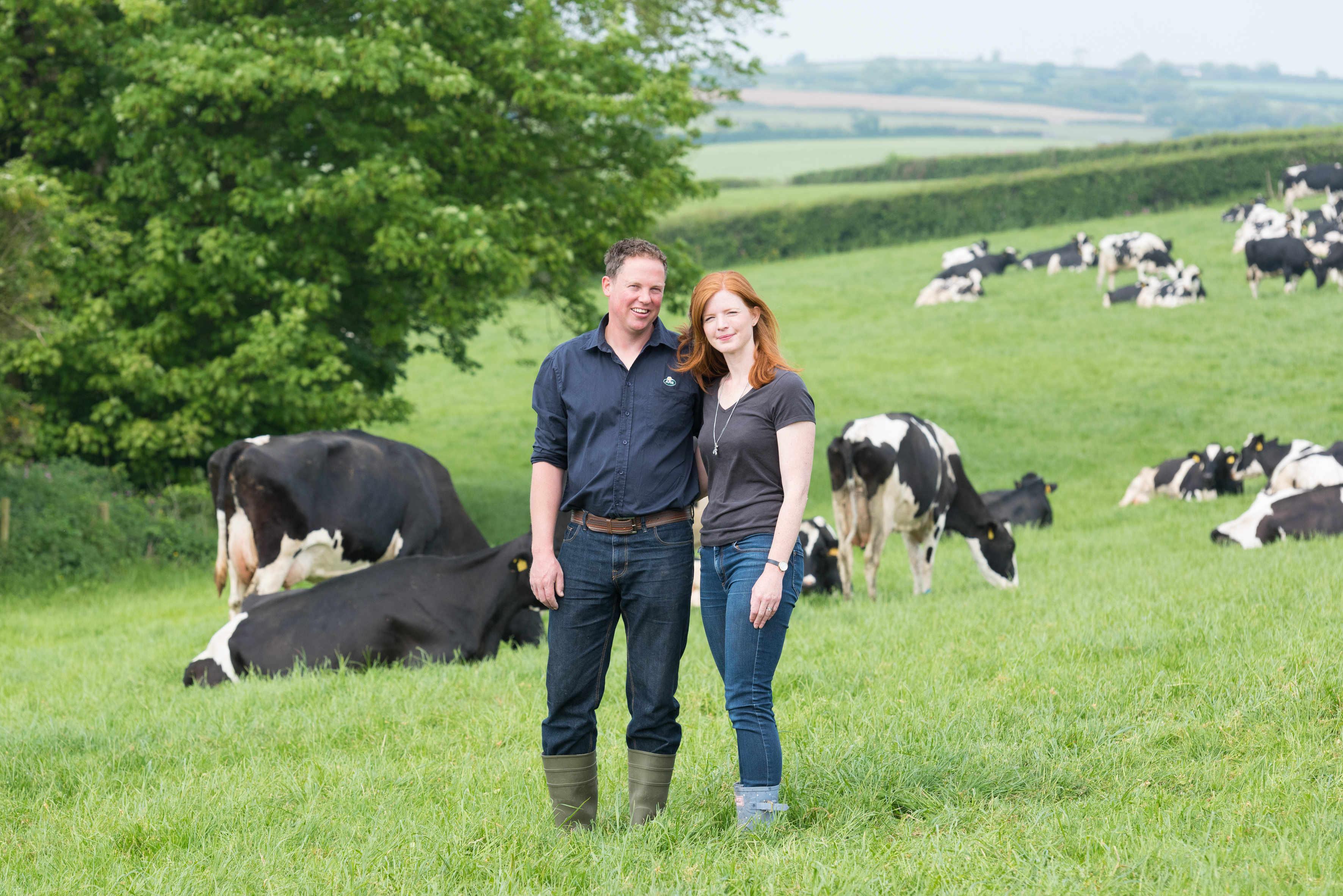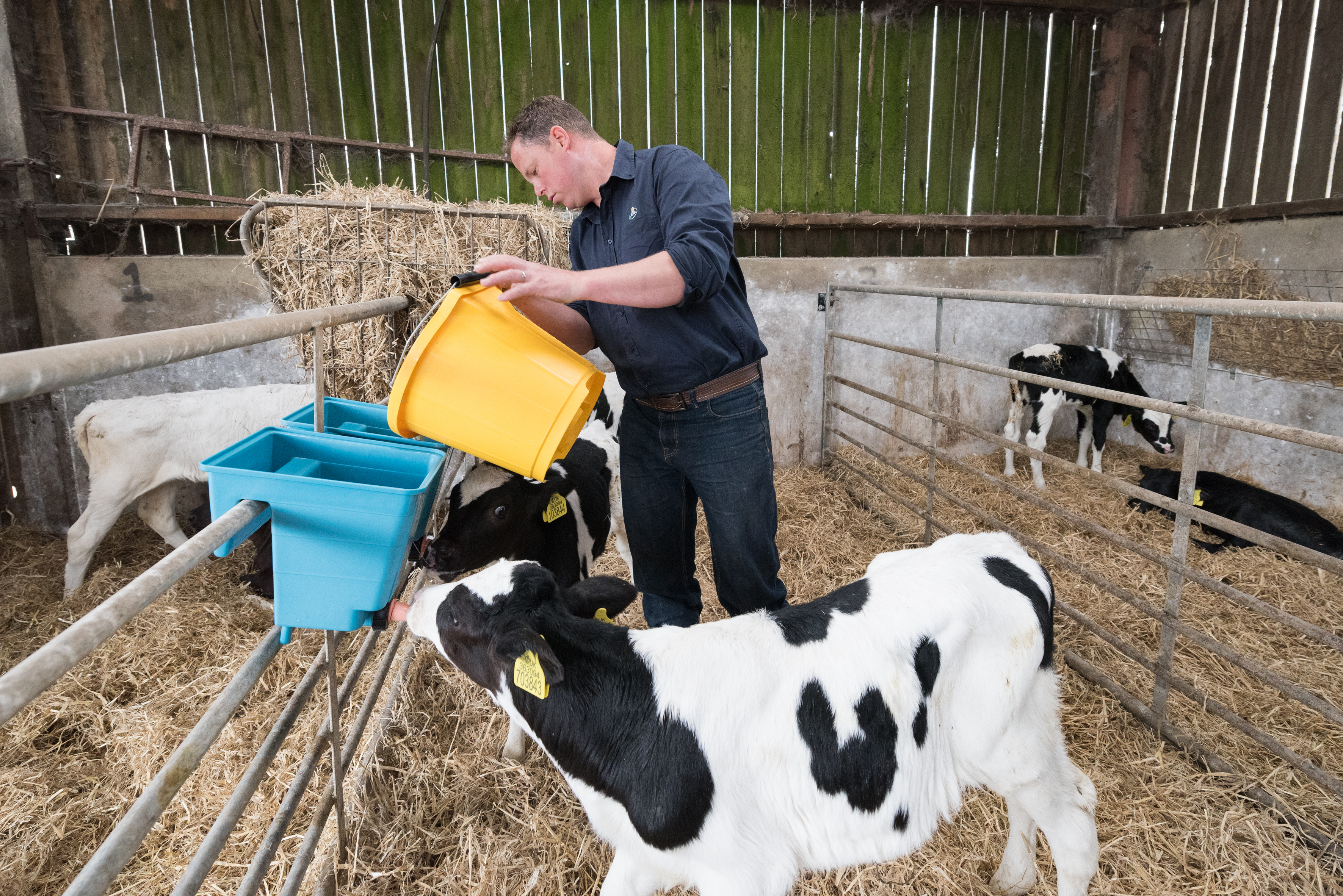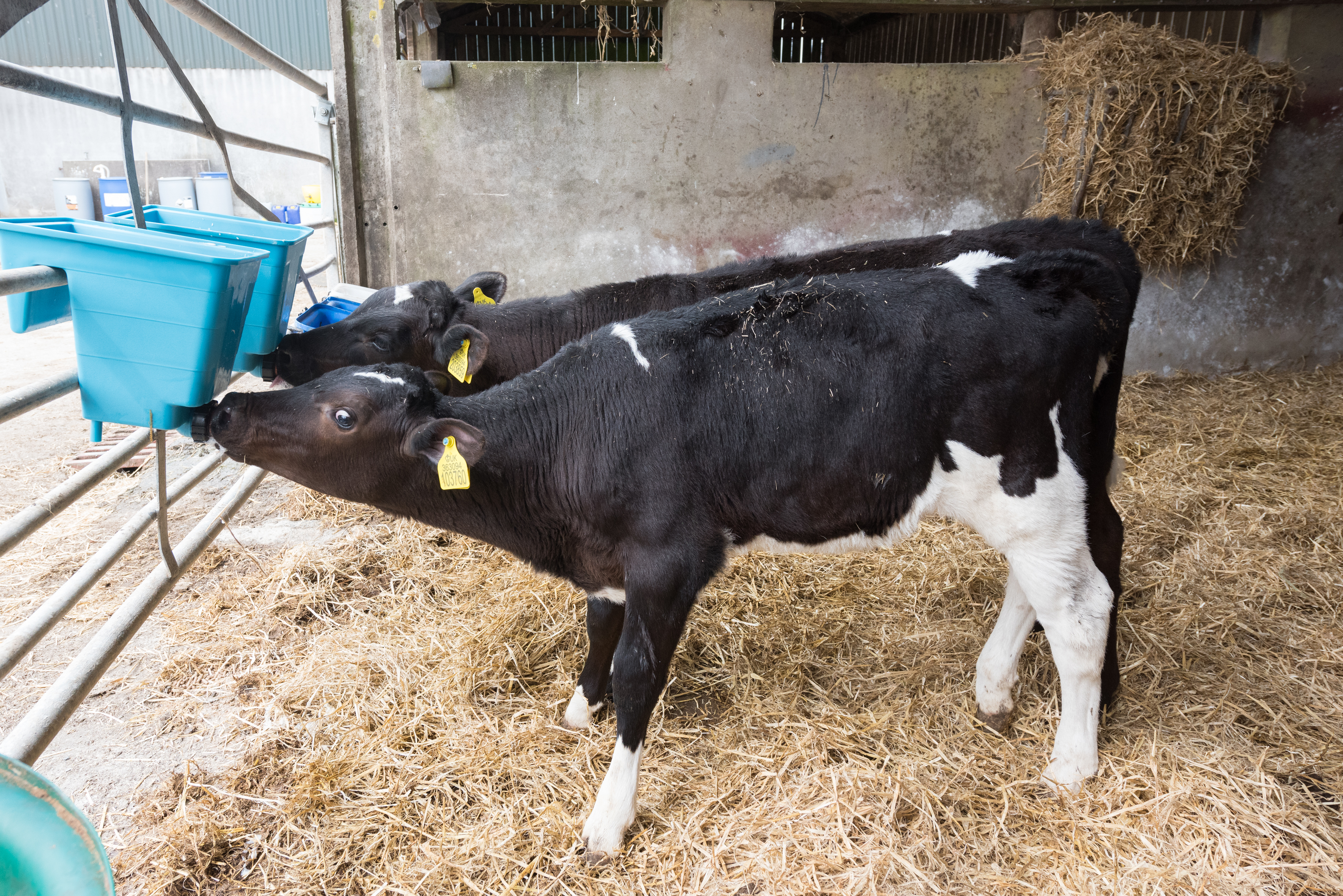Since combining genomic testing with a sexed and beef strategy, rapid gain in £PLI has been achieved on the youngstock of £154 per head above the milking heifers.
In 2018 Devon dairy farmer Darren Furse adopted a sexed and beef strategy, alongside genomic testing, as part of a Cogent and Arla trial.

The aim was to optimise the value of every animal produced on-farm.
Mr Furse says: “There’s no way I’d stop genomically testing or using sexed semen – it is the best way forward.” Genomic testing allows the genetic status of an animal to be established at a young age.
This ensures only the best heifers are served to dairy, meaning only the top performers produce replacements.
Beef can then be put on the lower end.
Mr Furse says: “The rate of genetic gain by not breeding your worst cows and putting them to beef and only breeding replacements from your best is huge.
Then if you put on top of that using your best bulls, you’ve got vast genetic gain.
And then you’re also getting higher value beef too.” Mr Furse farms in partnership with wife Claire and his parents, Nigel and June, at Westcott Farm, Holsworthy.
The family run the 305-cow Westcott herd of pedigree Holstein Friesians.
Cows yield 9,974 litres per cow per year at 4.32% protein and 3.5% fat.

Breeding aims
Breeding decisions are focused around producing a sustainable, profitable, healthy herd, which are longlived and productive.
Emphasis is placed on good feet and legs, fertility and mastitis reduction.
This has been helped by signing up to Cogent’s Precision MATCH corrective mating programme.
The company’s Precision Match Evaluator Amy Hall-Brown scores the cows for 18 Type traits, including stature, rump angle, udder depth and teat depth. Locomotion is also assessed.
Cogent genetic consultant David Wilcox works with the Furses to choose a selection of bulls to meet the farm’s breeding aims.
Moving forward this means selecting sires with a £PLI of £700 or more and 65kg plus for combined milk fat and protein.
A good score for health traits is also crucial.
The programme will then select the best bulls to use on an individual female to correct the traits identified.
Mr Furse says: “I wanted more strength and longevity in the cows.
MATCH looked at the cows in a much better way. I don’t think I valued linear assessments before.
I was just looking at fat and proteins as that is what you get paid for.
But if the physical attributes are right, that is what makes a cow stay on the farm longer and be productive.
The herd is also much more uniform.” Calves being born in the last 12 months are sired by Mr Rubi-Agronaut, B52, Torque, Sunview Fantastic and Endco Supreme.
"There’s no way I’d stop genomically testing or using sexed semen – it is the best way forward" - Darren Furse.

Table 2: Improvements in genetic merits since adopting a sexed and beef strategy alongside genomic testing
Sexed and genomics
All heifers are genomically tested using PrecisionDNA. These females are then ranked on Cogent Custom Index (£CCI).
This takes into account an individual herd’s breeding aims and their specific milk contract requirements.
About 90% will be put to SexedULTRA 4M semen, with the rest which ‘were not good enough’ put to Aberdeen-Angus.
Mr Furse had dabbled with sexed semen in the past but had not had satisfactory results, causing him to stop using it.
As a result, prior to the trial, all heifers would have been served by an Aberdeen-Angus stock bull.
“That meant my best genetics were going to waste as they were going to beef.
The best genetics on-farm are always your youngest animals which genomic testing has shown us,” Mr Furse adds.
The introduction of automated heat detection collars increased Mr Furse’s confidence that bulling heifers would be picked up, which encouraged him to use sexed semen again.
SexedULTRA 4M also has double the number of semen cells per straw than traditional sexed semen, which can bring conception rates close to that of conventional semen.
Having used conventional dairy semen across cows in the past, sexed semen is now used on about a third of the best cows.
This group will be chosen through PrecisionMATCH based on linear assessment, parent average and £CCI.
Generally, cows will get one chance to sexed and then go to beef.
Usually there is a preference to serve younger cows to sexed as Mr Furse finds these animals tend to achieve better conception rates.

Conception rates
On average, conception rates across heifers and cows are approaching similar levels to those seen with conventional semen (see Table 1).

By improving artificial insemination technique, timing and mineral strategy, the hope is to improve these results further.
Mr Furse hopes sexed will eventually outperform conventional and also recognises the benefits of increased beef value having stopped breeding black and white bull calves.
He says: “We know Aberdeen-Angus or Belgium Blue calves are much more saleable than Holstein Friesian calves.
And if you get locked down with TB, when you come out, you can sell those bulls easier than a Friesian steer.” Now, beef calves are sold either privately or through the market at about four weeks old.
As an example of price differentiation, a Friesian bull would have sold for about £70 versus £300 for a British Blue bull and £240 for an Angus.
The farm has only just started using Blue sires on early lactation cows in an attempt to further raise calf value.
However, this strategy may change, depending on the long-term effect having a larger calf has on the cow.
Aberdeen-Angus sires are always used on heifers and later lactation cows.
Looking ahead, Mr Furse believes the breeding strategy is going in the right direction and he remains committed to every element. “There’s no looking back now,” he says.
